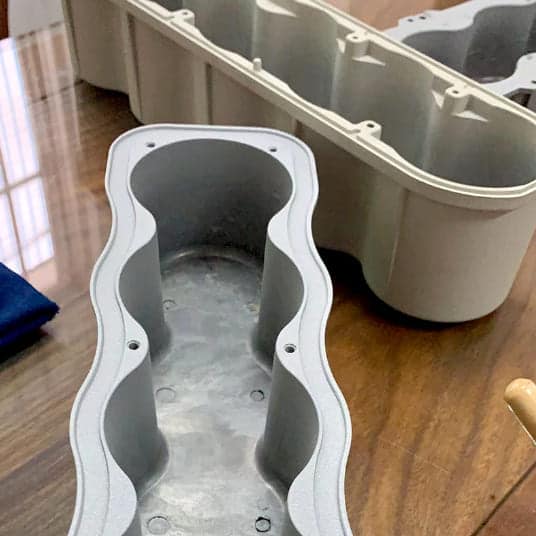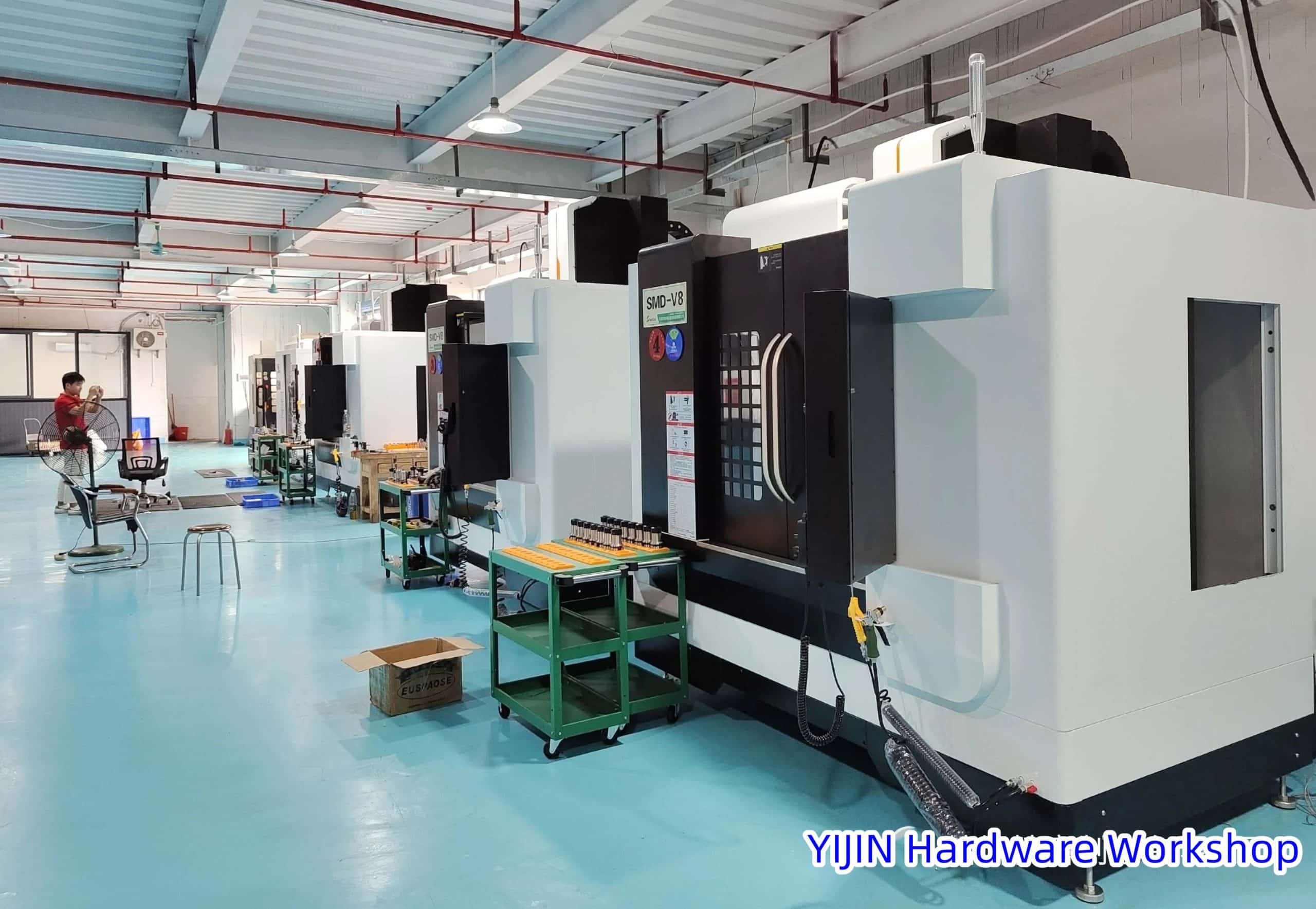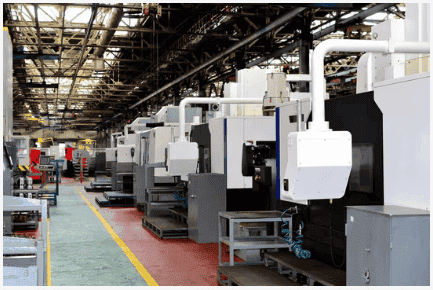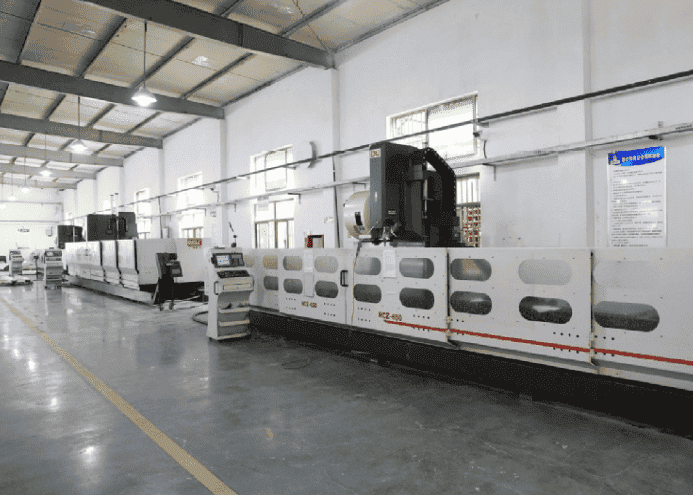Introduction to Aluminium CNC Auto Parts
In the ever-evolving landscape of the automotive industry, innovation and advancements continue to shape the way vehicles are designed, manufactured, and perform.
One notable revolution is the integration of aluminium CNC (Computer Numerical Control) auto parts, which has brought about a paradigm shift in vehicle engineering and performance optimization.
This introduction aims to shed light on the role, importance, and fundamental benefits of utilizing aluminium CNC auto parts in the automotive sector.
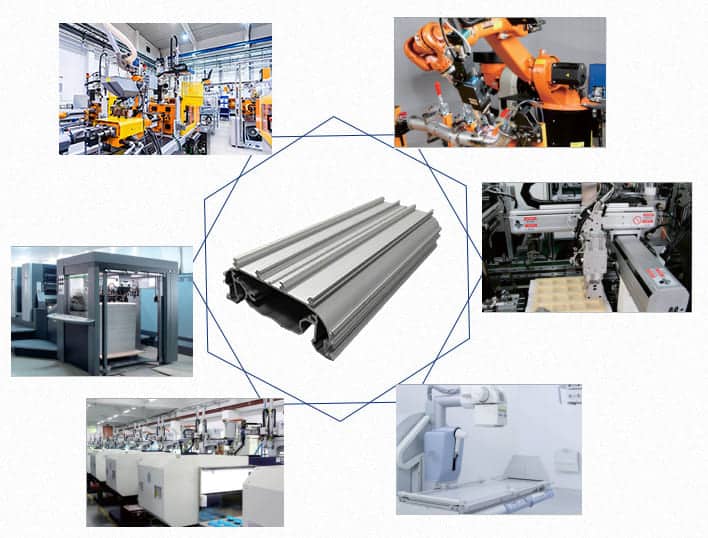
Role and Importance in the Automotive Industry
The automotive industry stands at the crossroads of efficiency, sustainability, and performance.
Within this context, aluminium CNC auto parts emerge as a game-changing element that redefines how vehicles are constructed and operate.
The role of these parts is pivotal, as they offer a conduit for achieving enhanced performance, fuel efficiency, and overall vehicle dynamics.
Moreover, they play a significant role in addressing the growing demand for lightweight materials that contribute to lower emissions and reduced environmental impact.
Aluminium CNC auto parts find application across various facets of vehicle construction, including engine components, chassis structures, body panels, and intricate interior elements.
This ubiquity underscores their importance in influencing a vehicle’s overall functionality and efficiency.
As manufacturers and engineers seek to meet stringent regulatory standards and consumer expectations, the integration of aluminium CNC auto parts emerges as a strategic imperative, enabling the industry to push the boundaries of innovation while prioritizing sustainability.
Fundamental Benefits of Using Aluminium in Auto Parts
The choice to utilize aluminium CNC auto parts is not arbitrary; it is rooted in a myriad of fundamental benefits that have a direct impact on vehicle performance and design.
Some of the key advantages include:
- Weight Reduction: Aluminium is renowned for its exceptional strength-to-weight ratio. By integrating aluminium CNC parts, vehicles shed excess weight without compromising structural integrity. This reduction in weight translates to improved acceleration, maneuverability, and fuel efficiency.
- Enhanced Efficiency: The lightweight nature of aluminium CNC auto parts minimizes the energy required for propulsion, resulting in reduced fuel consumption and emissions. This is pivotal in the pursuit of eco-friendly and economically viable transportation solutions.
- Optimized Thermal Management: Aluminium boasts excellent thermal conductivity, making it an ideal material for components subjected to high temperatures. Engine parts manufactured using aluminium CNC machining dissipate heat efficiently, leading to enhanced performance, reduced wear, and prolonged component life.
- Customization and Precision: CNC machining empowers engineers to craft intricate and precisely tailored designs. This customization not only enhances the aesthetic appeal of vehicles but also enables the creation of components optimized for specific performance objectives.
- Corrosion Resistance: Aluminum’s natural resistance to corrosion ensures that vehicles remain structurally sound even when exposed to harsh environmental conditions. This durability contributes to the longevity of vehicles and reduces maintenance requirements.
- Dynamic Handling: The integration of aluminium CNC auto parts, particularly in suspension components, leads to reduced unsprung mass. This results in improved handling, responsiveness, and a smoother ride.
- Innovative Design: The flexibility of aluminium CNC machining allows for the creation of innovative and aerodynamically efficient designs.
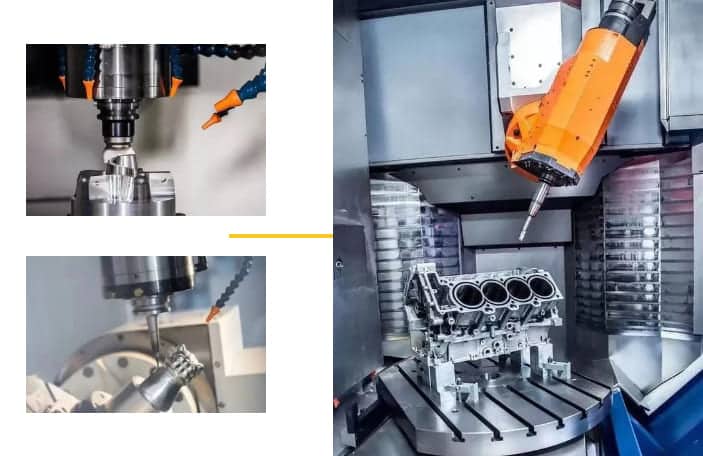
In conclusion, the advent of aluminium CNC auto parts signifies a transformational chapter in the automotive industry’s evolution.
The role and importance of these parts extend beyond conventional engineering; they embody a commitment to pushing the boundaries of what is possible while prioritizing sustainability, efficiency, and performance.
The ensuing sections will delve deeper into the multifaceted benefits of utilizing aluminium CNC auto parts, highlighting their profound impact on specific aspects of vehicle operation and design.
Lightweight Properties and Vehicle Performance
The correlation between vehicle weight and performance is a fundamental principle in automotive engineering.
Achieving optimal vehicle performance often involves minimizing weight while maintaining structural integrity.
This section explores the intricate relationship between vehicle weight and performance, focusing on how aluminium CNC auto parts play a pivotal role in weight reduction and performance enhancement.
The Relationship Between Vehicle Weight and Performance
Vehicle weight is a critical factor that influences various aspects of performance:
- Acceleration: A lighter vehicle requires less energy to accelerate, leading to quicker acceleration times and improved responsiveness. This is particularly important for vehicles aiming for efficient overtaking and merging on highways.
- Handling and Maneuverability: A lower weight contributes to improved handling, allowing the vehicle to respond more precisely to driver inputs. Lighter vehicles can change direction more quickly and exhibit better cornering capabilities.
- Braking Distance: Reduced weight means less kinetic energy to dissipate during braking, resulting in shorter braking distances. This enhances safety and responsiveness, especially in emergency braking situations.
- Tire Wear: Heavier vehicles exert more stress on tires, leading to increased wear and potentially compromising handling. Lighter vehicles experience less tire wear and maintain consistent performance.
- Suspension Performance: Excess weight can strain suspension systems, affecting ride quality and stability. Lighter vehicles experience less suspension wear and offer a smoother ride.
How Aluminium CNC Auto Parts Contribute to Weight Reduction
Aluminium CNC auto parts are at the forefront of weight reduction strategies in the automotive industry.
Below are the factor that responsible for vehicle weight reduction:
- Material Advantage: Aluminium is very lighter material as compare to any other material such as steel, cast iron, brass etc so, this become ideal component where low weight is essential.
- Engine Components: Aluminium CNC machining is used to create lightweight engine components such as cylinder heads, engine blocks, and intake manifolds. These parts reduce the overall weight of the engine while maintaining durability and thermal efficiency.
- Chassis and Body Panels: Aluminium body panels and chassis components, produced through CNC machining, replace heavier steel parts. This reduction in weight enhances vehicle agility, handling, and fuel efficiency.
- Suspension Elements: Suspension components like control arms, knuckles, and sway bars can be manufactured from aluminium using CNC machining. These lightweight parts improve suspension performance, responsiveness, and overall driving experience.
- Exhaust Systems: CNC-machined aluminium exhaust components contribute to reduced weight and improved exhaust flow. This enhances engine efficiency and performance.
- Interior Design: Aluminium CNC machining enables the creation of lightweight interior components such as seats, panels, and trim. This parts reduce the weight of car also enhances the aesthetic of car also.
- Customization and Optimization: CNC machining allows for intricate designs that optimize material distribution, ensuring parts are strong where needed and lightweight elsewhere.
Recommended: 2023 Top 10 CNC Design Services Companies In China
By utilizing aluminium CNC auto parts, manufacturers can strike a balance between structural integrity, weight reduction, and improved performance.
This approach aligns with the automotive industry’s pursuit of innovation and sustainability, paving the way for vehicles that are not only efficient but also exhilarating to drive.
Increasing Fuel Efficiency with Aluminium CNC Auto Part
In an era marked by environmental consciousness and stringent fuel economy regulations, the automotive industry is continually seeking innovative solutions to enhance vehicle fuel efficiency.
One such solution lies in the integration of aluminium CNC (Computer Numerical Control) auto parts, which play a crucial role in reducing vehicle weight and subsequently improving fuel consumption.
This section delves into the relationship between reduced weight and fuel efficiency, while also highlighting specific aluminium CNC auto parts that contribute to this endeavor.
Role of Reduced Weight on Fuel Consumption
The weight of a vehicle is directly linked to its fuel consumption. As vehicles become heavier, more energy is required to propel them, resulting in increased fuel usage.
- Reduced Energy Demand: A lighter vehicle requires less energy to accelerate, maintain speed, and overcome resistance. This directly translates into reduced fuel consumption, as the engine exerts less effort to move the vehicle.
- Optimized Engine Performance: Lighter vehicles put less strain on engine so, efficient of vehicle is increases drastically. Engines in lightweight vehicles can achieve better power-to-weight ratios, resulting in improved fuel economy.
- Enhanced Aerodynamics: Lighter vehicles often boast improved aerodynamics due to streamlined designs. Reduced drag helps the vehicle move through the air more smoothly, requiring less power and fuel to maintain speed.
- Braking Efficiency: Lighter vehicles have shorter braking distances due to their reduced kinetic energy. This means that less energy is wasted as heat during braking, resulting in improved overall efficiency.
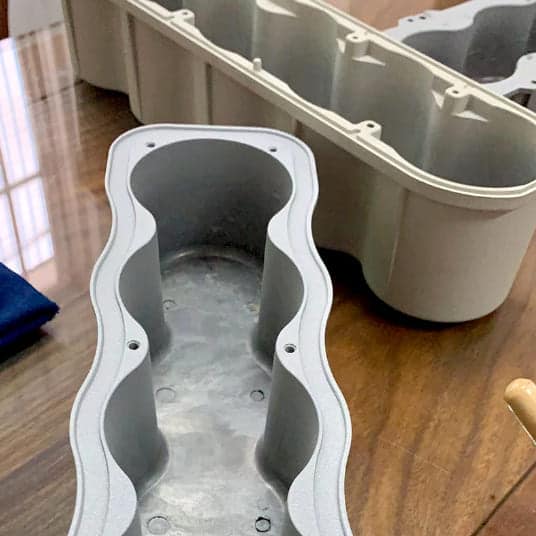
Specific Aluminium Parts that Contribute to Fuel Efficiency
Several specific aluminium CNC auto parts contribute significantly to increasing fuel efficiency:
- Engine Components: Cylinder heads, engine blocks, and intake manifolds manufactured from aluminium using CNC machining reduce the weight of the engine. This results in improved power-to-weight ratios and reduced fuel consumption.
- Transmission Components: Aluminium CNC parts in transmission systems, such as casings and gears, contribute to reduced weight and improved efficiency in transmitting power from the engine to the wheels.
- Chassis and Frame Components: Aluminium body panels, frames, and chassis components reduce the overall weight of the vehicle.
- Suspension Elements: Lightweight aluminium control arms, knuckles, and other suspension components decrease unsprung mass. This enhances the suspension’s ability to absorb bumps and maintain tire contact with the road, resulting in improved fuel economy.
- Exhaust Systems: Aluminium CNC-machined exhaust components are not only lighter but also contribute to improved exhaust flow. This enhances engine efficiency and can lead to fuel consumption reductions.
- Wheels: Lightweight aluminium alloy wheels reduce unsprung mass, contributing to better fuel efficiency and improved handling. Their reduced weight means less energy is required to accelerate and maintain speed.
- Interior and Trim: Even interior components like seats, panels, and trim made from aluminium CNC parts contribute to overall weight reduction. This indirectly impacts fuel efficiency by reducing the load the vehicle must carry.
By strategically incorporating aluminium CNC auto parts into key areas of a vehicle, manufacturers can achieve substantial weight reductions that directly translate into improved fuel efficiency.
This approach aligns with the industry’s commitment to sustainability and meets the demands of eco-conscious consumers, all while ensuring a smoother and more efficient driving experience.
Improving Vehicle Safety with Aluminium CNC Auto Parts
In the pursuit of enhancing vehicle safety, the utilization of aluminium CNC (Computer Numerical Control) auto parts has emerged as a significant advancement in automotive engineering.
Aluminum, known for its lightweight properties and structural integrity, plays a crucial role in improving crashworthiness and overall vehicular safety.
This section examines the strength and durability of aluminium parts in vehicles, and how they impact crashworthiness and safety.
Strength and Durability of Aluminium Parts in Vehicles
- High Strength-to-Weight Ratio: Because of its outstanding strength-to-weight ratio, aluminium is a great material to use for creating car components. This means that aluminium parts can withstand substantial loads and forces while remaining relatively lightweight.
- Structural Integrity: Aluminium maintains its structural integrity even under extreme conditions. Precision is guaranteed during the creation of these parts thanks to CNC machining, producing parts that are incredibly resilient to deformation and fatigue.
- Corrosion Resistance: Aluminium naturally forms a oxide layer on the upper surface so, it becomes corrosion resistance. This property prolongs the lifespan of aluminium parts and contributes to their long-term durability.
- Material Innovation: Advanced aluminium alloys are engineered to further enhance strength and durability. These alloys are designed to meet the demands of modern vehicles, providing a balance between performance, safety, and weight reduction.
Impact on Crashworthiness and Vehicular Safety
- Crash Energy Absorption: Aluminium parts effectively absorb and distribute crash energy during collisions. The controlled deformation of aluminium components helps dissipate impact forces and reduce the potential for severe structural damage to the vehicle’s cabin.
- Occupant Protection: The strategic use of aluminium CNC auto parts in vehicle construction can enhance the safety of occupants. Aluminum’s ability to deform in a predictable manner helps direct crash forces away from the passenger compartment, minimizing the risk of injury.
- Rigidity and Stability: Aluminium parts contribute to the overall rigidity and stability of a vehicle’s structure. A well-designed and rigid vehicle structure improves handling and stability, reducing the likelihood of accidents and rollovers.
- Weight Distribution: The precision machining enabled by CNC machining ensures that aluminium parts can be tailored to distribute weight optimally throughout the vehicle.
- Enhanced Design Flexibility: CNC machining allows for intricate and precise designs that can optimize crumple zones and impact-absorbing structures.
- Certification and Testing: To guarantee that they fulfill safety standards, aluminium components go through a thorough testing and certification process. Manufacturers meticulously design, engineer, and test these parts to ensure they contribute positively to overall vehicle safety.
In summary, aluminium CNC auto parts play a significant role in improving vehicle safety and crashworthiness.
Their strength, durability, and ability to absorb and distribute crash energy make them integral components for ensuring the protection of occupants in the event of a collision.
The combination of precision CNC machining and advanced aluminium alloys leads to components that strike a balance between weight reduction, performance, and safety, reinforcing the automotive industry’s commitment to safer and more secure vehicles.
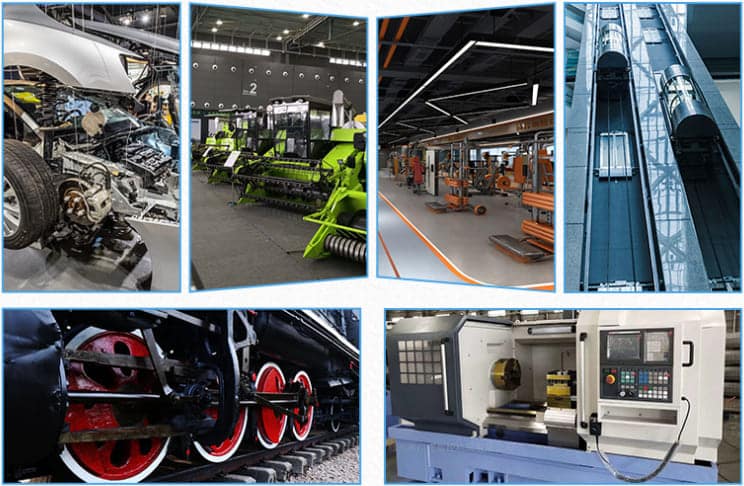
Aluminium CNC Auto Parts and Driving Comfort
The integration of aluminium CNC (Computer Numerical Control) auto parts not only enhances vehicle performance and safety but also significantly impacts driving comfort.
Aluminum’s unique properties and precise CNC machining contribute to improved vehicle handling, ride quality, and reduced noise and vibration levels.
This section explores how aluminium CNC auto parts influence these aspects of driving comfort.
Effect on Vehicle Handling and Ride Quality
- Reduced Unsprung Mass: Unsprung mass, which includes wheels, tires, and some suspension parts, is the weight that the vehicle’s suspension system is not designed to sustain. Aluminium CNC parts, such as lightweight control arms and suspension elements, reduce unsprung mass. This results in better tire contact with the road surface, improved road-holding ability, and enhanced overall handling.
- Enhanced Suspension Performance: Aluminium suspension components allow for more precise tuning of suspension systems. This can lead to improved damping characteristics, better shock absorption, and a smoother ride over varying road surfaces.
- Weight Distribution: Aluminum’s lightweight nature enables engineers to optimize weight distribution throughout the vehicle. A balanced weight distribution enhances stability, minimizes body roll during cornering, and contributes to predictable and comfortable handling.
- Agility and Responsiveness: The reduced weight of aluminium CNC auto parts positively influences the vehicle’s agility and responsiveness. This translates to quicker steering response and more engaging driving dynamics, enhancing the overall driving experience.
Contribution to Noise and Vibration Reduction
- Vibration Damping: Aluminum’s inherent dampening properties help absorb vibrations generated by the engine, road irregularities, and other sources. This helps to get smooth and safer ride.
- Enhanced Structural Rigidity: Aluminium components can be strategically integrated into a vehicle’s structure to improve overall rigidity. This reduces the potential for rattles, vibrations, and squeaks, resulting in a quieter and more refined driving environment.
- Noise Insulation: The use of aluminium CNC parts can be accompanied by sound-insulating materials to further reduce noise transmission into the cabin. This combination effectively minimizes road, wind, and engine noise, enhancing passenger comfort.
- Less Resonance: Aluminum’s unique properties help minimize resonance frequencies that can amplify vibrations.
- Comfortable Cruising: The reduction in overall vehicle weight due to aluminium parts leads to less strain on suspension systems. This translates to improved comfort during extended highway cruising, as the suspension can better absorb road imperfections.
In conclusion, aluminium CNC auto parts not only impact performance and safety but also significantly enhance driving comfort.
Their ability to reduce unsprung mass, enhance suspension performance, and contribute to noise and vibration reduction creates a more pleasant and enjoyable driving experience.
These advancements align with the automotive industry’s commitment to providing vehicles that excel not only in performance and efficiency but also in the comfort and satisfaction of the driver and passengers.
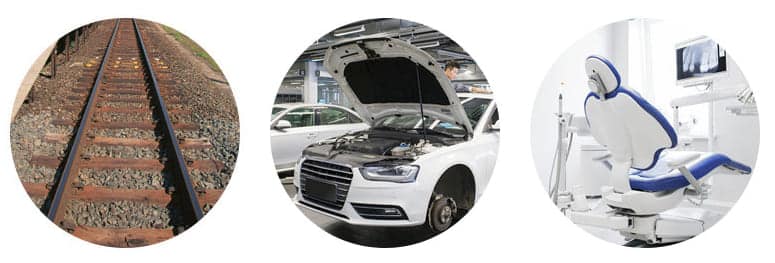
The Future of Aluminium CNC Auto Parts
As the automotive industry continues to evolve, aluminium CNC (Computer Numerical Control) auto parts are poised to play a pivotal role in shaping the future of vehicles.
The intersection of emerging automotive technologies and advancements in aluminium CNC manufacturing holds the potential for transformative changes in vehicle design, performance, and sustainability.
This section explores the promising landscape of aluminium CNC auto parts in the future.
Emerging Automotive Technologies and Aluminium’s Role
- Electric and Hybrid Vehicles: The transition to electric and hybrid vehicles requires lightweight materials to offset the weight of batteries. Aluminium CNC auto parts are crucial for achieving the desired efficiency, range, and performance in these vehicles. Components like chassis structures, battery housings, and lightweight body panels will play a significant role.
- Autonomous Driving: Autonomous vehicles demand precise and lightweight components to optimize energy efficiency and safety. Aluminium CNC parts can aid in creating sensor mounts, structural supports, and lightweight frames, contributing to the overall functionality of autonomous systems.
- Advanced Materials Integration: The use of aluminium CNC parts can be combined with other advanced materials, such as carbon fiber composites. This hybrid approach can lead to even greater weight reduction, improved strength, and enhanced performance.
- Additive Manufacturing: Additive manufacturing is also referred as 3D printing in which complex shape parts can be manufacturing with this technology. Aluminium CNC parts could benefit from additive manufacturing techniques, allowing for innovative designs and complex geometries.
- Connected Vehicles: Aluminium CNC auto parts can integrate seamlessly with the sensors and communication technologies required for connected vehicles. Lightweight and precisely manufactured components are essential for maintaining vehicle integrity while accommodating advanced electronics.
Potential Growth and Advancements in Aluminium CNC Manufacturing
- Advanced Alloys: Continued research and development will likely lead to the creation of even stronger and more durable aluminium alloys. These alloys can further enhance the performance of aluminium CNC parts while maintaining their lightweight properties.
- Precision and Efficiency: Ongoing advancements in CNC machining technology will lead to increased precision and efficiency in manufacturing aluminium parts. This will allow for more intricate designs, better surface finishes, and reduced production times.
- Integration of Sensors: As vehicles become more technologically sophisticated, aluminium CNC parts could be manufactured to accommodate embedded sensors for various purposes, such as structural health monitoring or real-time performance optimization.
- Sustainability: The automotive industry’s focus on sustainability will drive the development of environmentally friendly manufacturing processes for aluminium CNC parts. This could include energy-efficient machining methods and increased recycling of aluminium materials.
- Cost-Efficiency: As CNC machining becomes more accessible and efficient, the cost of manufacturing aluminium parts could decrease. This would make the integration of aluminium CNC auto parts more feasible for a wider range of vehicle models.
- Design Innovation: The combination of aluminium’s malleability and CNC machining’s precision opens the door to unprecedented design possibilities. Future vehicles could feature more aerodynamic, efficient, and aesthetically appealing components.
In conclusion, the future of aluminium CNC auto parts is closely intertwined with the evolution of automotive technologies and manufacturing processes.
These parts are poised to drive innovation in electric and autonomous vehicles, contribute to connectivity, and create new standards for lightweight, high-performance components.
As the automotive industry continues its journey toward sustainability, efficiency, and safety, aluminium CNC auto parts are poised to be at the forefront of these transformative changes.
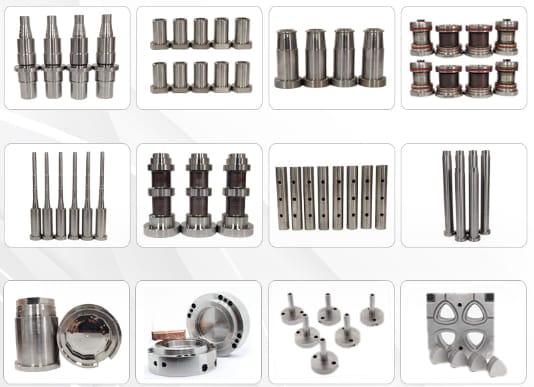
The Impact of Aluminium CNC Auto Parts on Vehicle Performance
The influence of aluminium CNC (Computer Numerical Control) auto parts on vehicle performance is a dynamic force driving innovation in the automotive industry.
These meticulously crafted components embody a synthesis of lightweight strength and precision engineering, reshaping the landscape of acceleration, handling, and efficiency.
This exploration delves into how aluminium CNC auto parts are not only revolutionizing performance but also shaping the future of automotive excellence.
Recap of Aluminium’s Major Contributions to Improve Vehicle Performance
The incorporation of aluminium CNC (Computer Numerical Control) auto parts has ushered in a new era of vehicle performance enhancement.
Key contributions include:
- Weight Reduction: Aluminium’s lightweight nature significantly reduces vehicle weight, leading to improved acceleration, handling, and fuel efficiency.
- Strength and Durability: Aluminium’s high strength-to-weight ratio ensures structural integrity and durability, crucial for maintaining performance under various conditions.
- Thermal Management: Aluminium’s excellent thermal conductivity aids in effective heat dissipation, enhancing engine performance and longevity.
- Customization and Precision: CNC machining allows for intricate and precise designs, tailoring parts to specific performance requirements.
- Corrosion Resistance: Aluminium’s natural corrosion resistance prolongs the lifespan of components, ensuring long-term performance.
- Aerodynamics: CNC-machined aluminium parts can create streamlined and aerodynamic designs, reducing drag and increasing efficiency.
- Suspension Enhancement: Lightweight aluminium suspension components improve handling, responsiveness, and comfort.
- Engine Performance: Aluminium engine components optimize airflow, combustion efficiency, and overall engine weight.
- Aftermarket Potential: Enthusiasts can benefit from aftermarket aluminium CNC parts for performance upgrades.
The Ongoing and Future Significance of Aluminium CNC Auto Parts
The significance of aluminium CNC auto parts in vehicle performance is set to evolve and endure:
- Continued Innovation: Advancements in aluminium alloys and CNC machining techniques will lead to more innovative designs and optimized performance.
- Evolving Technologies: As vehicles become more electrified, autonomous, and connected, aluminium CNC parts will remain vital in creating lightweight and efficient structures for these technologies.
- Sustainability: Aluminium’s recyclability aligns with the industry’s push for sustainable practices, ensuring its ongoing relevance in the automotive landscape.
- Efficiency and Emissions: The lightweight properties of aluminium will continue to be instrumental in achieving stringent emissions regulations and fuel efficiency goals.
- Driving Experience: Aluminium CNC auto parts will continue to shape the driving experience by enhancing handling, comfort, and overall enjoyment on the road.
- Safety and Crashworthiness: Aluminium’s strength and energy absorption capabilities will continue to contribute to vehicle safety in collision scenarios.
- Design Aesthetics: Aluminium CNC parts’ ability to create intricate and appealing designs will influence the aesthetics of future vehicles.
Conclusion
Incorporating aluminium CNC auto parts into vehicles marks a significant stride towards enhancing overall performance.
The lightweight strength of aluminium, coupled with precision CNC machining, paves the way for improved acceleration, handling, and fuel efficiency.
These parts contribute to superior thermal management, corrosion resistance, and innovative design possibilities.
Recommended: 2023 Top 10 Best Auto Spare Parts Manufacturing In China
 Call Us Today! (+86) 188-2253-7569
Call Us Today! (+86) 188-2253-7569